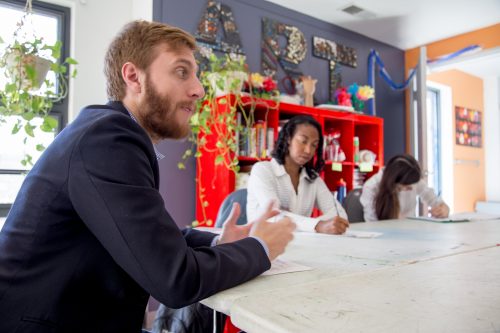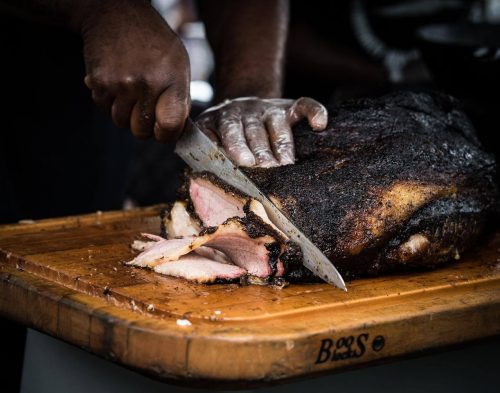This week’s Baltimore news includes: Hogan vows to leave no arm behind, an old law means new arts funding, Netflix and Bmore club, and more reporting from WYPR, Baltimore Fishbowl, Maryland Matters, and other local and independent news sources.


This week’s Baltimore news includes: Hogan vows to leave no arm behind, an old law means new arts funding, Netflix and Bmore club, and more reporting from WYPR, Baltimore Fishbowl, Maryland Matters, and other local and independent news sources.
Hogan Announces Another Vaccine Initiative
by Joel McCord
Published April 21 in WYPR
Excerpt: Gov. Larry Hogan announced another effort Wednesday to get more Marylanders vaccinated against the coronavirus. He’s calling this one No Arm Left Behind.
It includes setting up partnerships at 42 colleges, universities and community colleges in Maryland to create social media and advertising campaigns to get students vaccinated.
It also involves working with the state’s largest employers, including Southwest Airlines and Amazon to make sure their employees get vaccinated as well as efforts aimed at older Marylanders.
“We’re also proactively reaching out to and directly contacting more than 70,000 of the state’s Medicaid recipients age 50 and older who have not yet received a vaccine,” he said. “And we’re booking appointments for more of them every single day.”
In addition, General Janeen Birckhead of the Maryland National Guard announced plans for a three-day walk-up clinic at Morgan State University in Baltimore, beginning April 30 and a vaccine town hall and clinic at Bowie State University on April 26.
Baltimore City Council seeks to streamline allocation of public art funds from capital projects
by Marcus Dieterle
Published April 20 in Baltimore Fishbowl
Excerpt: A law requiring Baltimore City to allocate 1% of capital construction costs towards public art has been on the books since 1964, but Councilman Ryan Dorsey (District 3) said “it’s been a challenge for many years” to ensure that city government follows it.
“It’s an old law,” he said. “It’s been on the books for more than half a century, and the folks who brought it about are no longer in our government.”
Members of the council’s Ways and Means committee and representatives of various city agencies discussed how to improve the administration of the “1% for Art” program, which generates about $700,000 a year, during an informational hearing on Tuesday.
See also:
Henry Instructs City Officials To Enforce 1% For Art Law, On The Books Since 1964
by Emily Sullivan
Published April 20 in WYPR
Cops charged in George Floyd and Freddie Gray deaths got similar special treatment
by Todd Oppenheim
Published April 16 in Baltimore Brew
Excerpt: Nearly five years ago in Baltimore, the trials of the six police officers charged in the killing of Freddie Gray began in one of our courthouses.
For this public defender, working in the trenches of the criminal court system, their cases raised deep issues of inequity.
Justice for victims like Gray was long overdue. At the same time, many of us were appalled at the officially sanctioned hypocrisy unfolding before our eyes involving the accused officers.
Fast forward to today:
Derek Chauvin’s trial for the death of George Floyd in Minneapolis is eerily reminiscent of what took place in Baltimore – namely, police are afforded a distinctly different brand of justice than the average defendant.
See also:
Maryland leaders support Chauvin conviction, call for systemic change
by Marcus Dieterle
Published April 21 in Baltimore Fishbowl
Anton Black’s Family Raps Frosh for Celebrating Chauvin’s Conviction
by Hannah Gaskill
Published April 21 in Maryland Matters
‘This is the time to listen’: Addressing the Chauvin verdict at work
by Stephen Babcock
Published April 21 in Technical.ly Baltimore
Excerpt: On Tuesday afternoon, the verdict came in.
When former Minneapolis police officer Derek Chauvin found guilty on three charges, including second and third-degree murder, in the May 2020 killing of George Floyd, it was an important moment for the country. So it’s fitting that the evening that followed the announcement featured collective gatherings in the streets, and statements from leaders like the mayor on the local level, on up to and including President Joe Biden.
The next day means getting back to work for many. Yet a new day doesn’t mean the moment has passed. And, as many of the statements from leaders pointed out, it doesn’t mean the work for racial justice is by any means complete. So even as work tied to employment goes on, managers and teammates are bringing their sentiments about the conviction to this day, and beyond.
“May We Forever Do Our Thing”
by Irene Bantigue
Published April 21 in Impact Hub Baltimore’s Medium
Excerpt: As the daughter of a dancer and jazz musician, one might say that Olu Butterfly Woods was destined for a life in the arts. More evidence lies in the fact that after moving around, her family returned to Baltimore during a major cultural renaissance: the emergence of the Baltimore club music movement.
“I initially took the movement for granted,” Olu says as she reflects on her younger self. “But looking back, it was really special.”
As a college student, Olu was heavily immersed in the local hip hop scene in between her mechanical engineering classes. She had a “whole other life outside of campus” and surrounded herself with fellow artists who “spent all of their waking hours creating.”
See also:
Movie Review: Dark City Beneath the Beat
by Max Weiss
Published April 15 in Baltimore Magazine
What Workers Could Gain from the Md. Essential Workers’ Protection Act
by Elizabeth Shwe
Published April 21 in Maryland Matters
Excerpt: Despite strong pushback from the business community and moving late in the legislative session, the Maryland Essential Workers’ Protection Act made it through both chambers by Sine Die. The emergency measure was substantially amended, but advocates say essential workers can still meaningfully benefit from the provisions that survived.
Above all, the bill’s significance comes from the clarity it could provide on workers’ rights, which has been obscure throughout the COVID-19 pandemic. More specifically, it would provide workers a recourse if their rights are violated by requiring the Maryland Secretary of Labor to establish coronavirus-specific safety regulations, also known as an “Emergency Temporary Standard.”
Under the Trump administration, the federal Occupational Safety and Health Administration refused to issue an Emergency Temporary Standard, making it hard for workers to demand safe working conditions during the pandemic.
Behold The COVID Buying Boom
by Christianna McCausland
Published April 21 in Baltimore Magazine
Excerpt: Nick and Kate Colvin loved their home in Homeland Mews. In their three years of ownership, they replaced the roof, updated the floors, and remodeled the kitchen and baths. They enjoyed their neighbors. Their two preschool-age daughters played in the front yard with other local children. Still, things were getting a little tight in the house. With a new baby on the way, the couple started thinking of selling and looking for a larger home. Then the pandemic arrived shortly after the birth of their son.
“We had no backyard, just a small brick patio and no room for a swing set,” says Kate. “We were quarantined at home with three kids who will only get bigger and Nick working from home. Even though we were thinking about moving before the third baby, the longer we were in the pandemic, the more of a driver it became.”
The Colvin’s story isn’t unique. After a brief drop in home-sales activity during the worst of the pandemic lockdown last year (and that was in the spring, when there’s usually a brisk market), the residential real-estate market rebounded with such gusto that Realtors and inventory can barely keep up.
Stuck at home for weeks on end, some consumers realized that their home wasn’t working for them or they simply didn’t like it. Buyers also wanted to capitalize on all-time low rates to buy homes more suitable for social distancing. And free of commutes in the new remote-working world, they were not hemmed in by geography. Then, a new segment turned up the market heat: millennials. Once written off as a generation of renters, they realized they could buy a home and pay less per month than their rent.
Battleground Baltimore: Protests Against Police and For Tenants’ Rights
by Lisa Snowden-McCray and Brandon Soderberg
Published April 19 in The Real News Network
Excerpt: In this week’s roundup of Baltimore news: Solidarity marches with Chicago and Minneapolis, the problematic Security Deposit Alternatives Bill, Dark City Beneath the Beat on Netflix, and more.
How a scaled-back Under Armour HQ helps rescue Kevin Plank’s shaky Port Covington project
by Mark Reutter
Published April 21 in Baltimore Brew
Excerpt: At the same time that Baltimore taxpayers are on the hook for $137 million in bonds to finance Kevin Plank’s private Port Covington project, the company he founded will drastically shrink its future corporate footprint in the city.
But there’s more to Under Armour’s announcement that it will scale back its headquarter plans at Port Covington than the fact that its stock has gone south and its brands have lost their luster.
For the athletic footwear and apparel maker, $70 million worth of land the company purchased from Plank on the peninsula has mostly lain fallow.
Left alone, the property would be hard to sell and could potentially spark another lawsuit alleging the company defrauded stockholders by entering into the land sale to enrich its then-CEO.
Plank, meanwhile, needs to get rid of $77.5 million in mortgages on the rest of the Port Covington land he purchased and wants to develop. (Plank owns everything north of Cromwell Street and west of Hanover Street, while Under Armour owns the land south of Cromwell Street. The Baltimore Sun has a long-term lease at 300 East Cromwell Street, which houses its printing plant and editorial offices.)
But even more pressing for Under Armour’s billionaire founder is the joint venture agreement he signed with Goldman Sachs in return for construction financing.
BONUS:
‘I regret my vote for you, Mr. Mayor’: Baltimore residents slam rise in police spending proposed in Scott’s 2022 budget
by Emily Opilo
Published April 21 in the Baltimore Sun
Excerpt: Baltimore residents condemned the city’s proposed budget, specifically a $28 million increase in funding for the city police department, during the city’s annual Taxpayers’ Night on Wednesday.
The organized outcry came in response to Mayor Brandon Scott’s preliminary budget proposal, which calls for $555 million in spending by the department in fiscal year 2022. As proposed, police spending would account for more than 15% of Scott’s $3.6 billion spending plan — an increase from the $527 million budgeted in fiscal year 2021.
Over the course of a nearly three-hour virtual hearing, residents by the dozens spoke out against the plan, many demanding a $100 million cut to police funding and millions more in investment in social programs such as affordable housing, after-school programs, crisis centers and substance abuse treatment.
“On its own, the amount of money spent on policing is ridiculous, but compared to the amount spent on other necessities it’s absurd,” said Onyinye Alheri, a resident of Upton. “We want our tax dollars to be used to address really dire problems in our communities.”
Header image: Olu Butterfly Woods (still from Dark City Beneath the Beat)